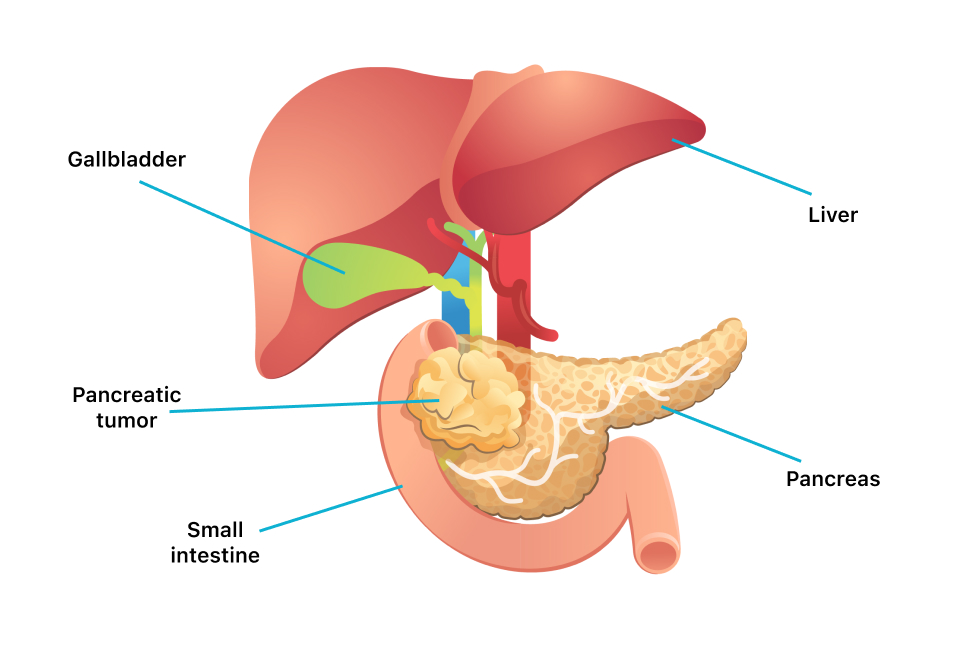Pancreatic Cancer

What is a Pancreatic Cancer?
Pancreatic cancer can develop from two kinds of cells in the pancreas: exocrine cells and neuroendocrine cells, such as islet cells. The exocrine type is more common and is usually found at an advanced stage. Pancreatic neuroendocrine tumors (islet cell tumors) are less common but have a better prognosis. Explore the links on this page to learn more about pancreatic cancer treatment, statistics, research, and clinical trials.
Symptoms
Signs and symptoms of pancreatic cancer often don’t occur until the disease is advanced. They may include:
- Abdominal pain that radiates to your back
- Loss of appetite or unintended weight loss
- Yellowing of your skin and the whites of your eyes (jaundice)
- Light-colored stools
- Dark-colored urine
- Itchy skin
- New diagnosis of diabetes or existing diabetes that’s becoming more difficult to control
- Blood clots
- Fatigue
Prevention
Cancer is not a single disease but a group of related diseases. Many things in our genes, our lifestyle, and the environment around us may increase or decrease our risk of getting cancer.
Scientists are studying many different ways to help prevent cancer, including the following:
- Ways to avoid or control things known to cause cancer.
- Changes in diet and lifestyle.
- Finding precancerous conditions early. Precancerous conditions are conditions that may become cancer.
- Chemoprevention (medicines to treat a precancerous condition or to keep cancer from starting).
- Risk-reducing surgery.
Carcinogenesis
Carcinogenesis is the series of steps that take place as a normal cell becomes a cancer cell. Cells are the smallest units of the body and they make up the body’s tissues. Each cell contains genes that guide the way the body grows, develops, and repairs itself. There are many genes that control whether a cell lives or dies, divides (multiplies), or takes on special functions, such as becoming a nerve cell or a muscle cell.
Changes (mutations) in genes occur during carcinogenesis.
hanges (mutations) in genes can cause normal controls in cells to break down. When this happens, cells do not die when they should and new cells are produced when the body does not need them. The buildup of extra cells may cause a mass (tumor) to form.
Tumors can be benign or malignant (cancerous). Malignant tumor cells invade nearby tissues and spread to other parts of the body. Benign tumor cells do not invade nearby tissues or spread.
Risk Factors
KEY POINTS
- Factors That are Known to Increase the Risk of Cancer
- Cigarette Smoking and Tobacco Use
- Infections
- Radiation
- Immunosuppressive Medicines After Organ Transplant
- Factors That May Affect the Risk of Cancer
- Diet
- Alcohol
- Physical Activity
- Obesity
- Diabetes
- Environmental Risk Factors
